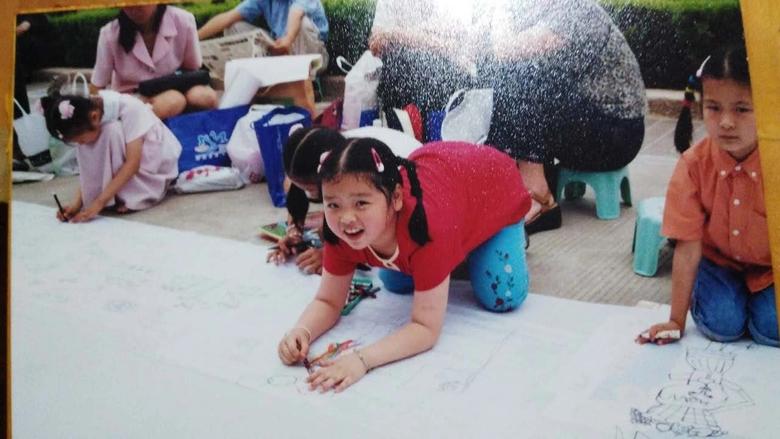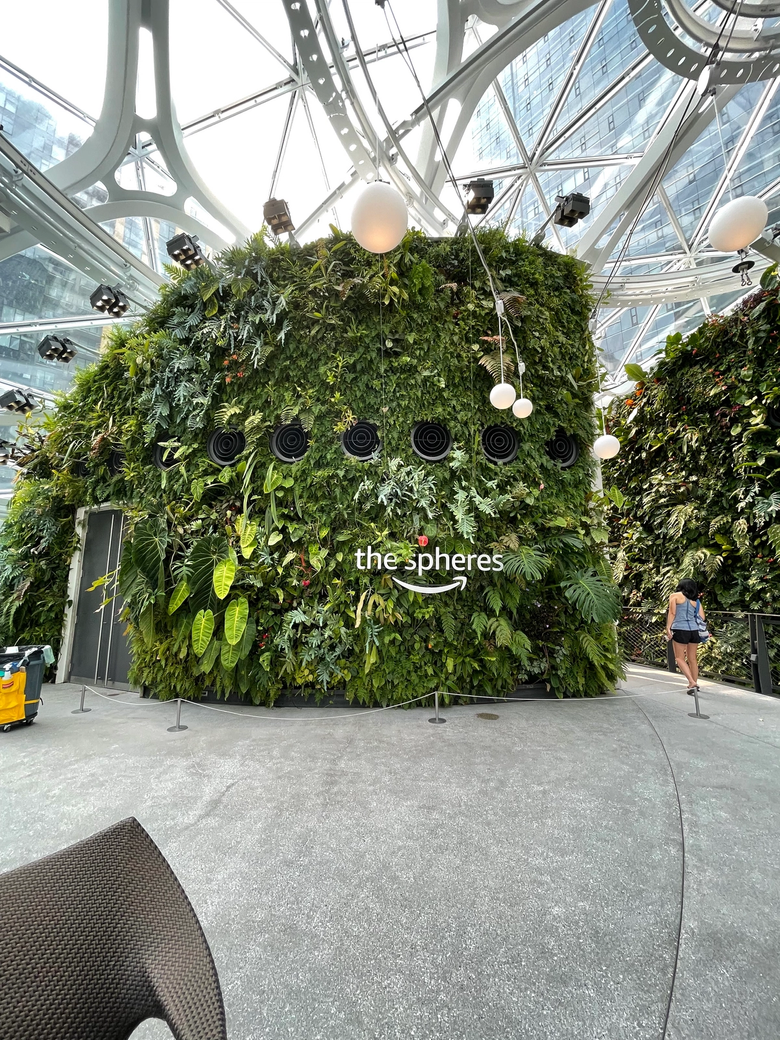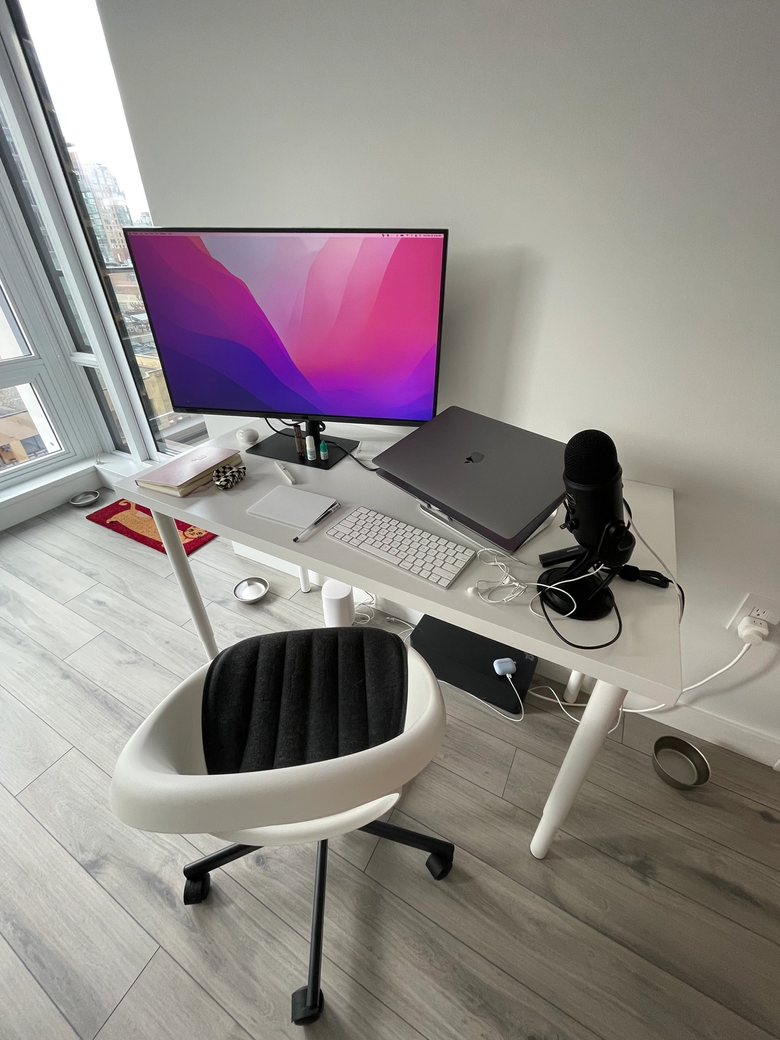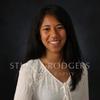Q&A with an Incoming Microsoft Product Designer
UX and product designer Minjun Chen talks about career growth, mentorship and her experience as a woman in tech
Minjun Chen made her transition into design with the University of Washington’s Human Computer Interaction program. Since then, she’s worked at a variety of businesses, from early-stage startups to big tech companies like Wayfair and Amazon. She was eager to share the story of her journey from Apple fan to full-time product designer.
How did you get started in product design?

In high school, I was obsessed with Apple products. I got my first Apple product, the iPod touch, in 2008. I was also super interested and passionate about going into painting. But becoming an artist, my parents were always worried about how I can live on my own. So I thought that maybe I should go the UX design path so I can pursue what I'm interested in while living on my own.
Having such a big goal in my mind, I still didn't know what to do in high school, so I stopped. I went to college and studied Chinese literature. However, I was still looking for opportunities in the student newspaper or a local magazine to work as a graphic design intern.
From there, I started to pick up Photoshop, Illustrator and these design tools on my own. It was still far away from digital product design, but I felt like I was on the design path, so I can at least learn the tools and build some sort of foundation.
In college, I was like an outlier because most of my classmates and friends studied literature, and they would continue to pursue the master of Chinese literature or Chinese history in their master's degree. However, I decided to go to the US and pursue a completely different path. When I was applying for school, I not only applied to HCI schools, but I also applied to some education schools.
Unfortunately, I didn't get accepted to any UX or HCI schools. However, I got accepted to a lot of education schools, so I decided to go to the University of Pennsylvania to study Learning Science and Technology. During my time at UPenn, I still wanted to become a UX designer.
I started to take a lot of design classes as my elective so I could build up my portfolio and apply for an HCI school again. Because of the efforts I made, I successfully got the offer from my dream school, the University of Washington in Seattle, the Human Computer Interaction Design program.

So I went to UW and finally studied UX design in 2017, ten years after the first Apple product that I owned. After I graduated from UW in 2018, I started working at different companies. I worked at some startups, as well as larger companies like Wayfair and Amazon. Now I'm going to join Microsoft in the next few months.
It wasn’t a linear path, but I always tried to keep my goal in my mind. I'm so happy that now I am an official UX designer.
Have you noticed a difference between working at early-stage startups vs. big companies?
First of all, I think that working in early-stage startup companies gives you a lot of exposure to work closely with the founder of this company. The CEO or the CFO might become the main stakeholder. You might have to communicate with them a lot during the daily workflow.
The second thing is that because it's an early-stage startup, everything is very messy. They don't have a typical or centralized process you can follow. A lot of stakeholders, or even the founders, don't know about UX design or what UX research looks like.
They might say we don't have time, or we don't have extra money to run the usability testing for this prototype. You might have to walk around and do some quick user testing with your PM or your coworkers. So you have to just do a lot of education work on your own as a designer.
The third thing is, especially for junior designers, you may be the solo designer, or just the second designer joining the company. Then you feel really lost because you don't know if this is the right solution, or how to look for feedback around the design when there's no other senior designer or design manager on your team.
In this kind of environment, as a junior designer working in an early-stage startup, you have to push yourself a lot and make decisions based on the feedback you learn from the PM or the founders.
However, working at a larger company like Amazon or Wayfair, you get a lot of opportunities to learn and get critique. You can also have a lot of design mentorship if you are looking for it within the company. For instance, at Amazon, we have an internal mentorship platform for the designers. I think this is really helpful, especially for mid-level and early-stage designers who are looking to grow and learn from more senior folks.

Before you started working at a big company, how did you find mentors or a support group in product design?
There are three ways I was reaching out to people. The first was LinkedIn. I might search up a company, like Microsoft or Amazon, for UX or product designers. People would pop up on the search result, so I might just send them an individual message so that we can have a coffee chat together. Usually I will prepare some questions in advance and ask for their career advice for junior designers.
The second way was that I joined some local design meetups. When I was in Boston, I joined Ladies That UX Boston. They had mostly local events before the pandemic. I actually went to these local events so I could chat with different designers and know about the design locally. During that event, one of the women designers at the group became my mentor.
The last place I looked for a mentor was my school’s alumni. They graduated from high school and worked in a company for a couple years before they came to volunteer to mentor a student from our UW program. So I was fortunate enough to get an alumni as my mentor early on in my career. But right now I see more and more online platforms, like ADPList, where you can search and find a mentor easier than before.
How much have other aspects of your education contributed to your career? How much do you use day-to-day in your work?

I think my education, especially in HCI, really helped me build a foundation in UX design research. What is the methodology? What is the process to clients in terms of the UX design research? Every time we are going to do some user testing, I know about how I can prepare the testing guidelines for the incoming research.
Also, coming from studying Chinese literature, I had a very academic background. So I feel that I have a lot of curiosity about doing the research, understanding the data and processing the data. I like thinking about how I can summarize these different data points to make it easy to understand. I feel like writing essays or papers can naturally transfer into design. It's really built up a lot of critical thinking and helped me better synthesize complicated information.
I feel like if you are in a design school, we teach design thinking rather than letting you pick up a tool. For softwares like Photoshop, Figma or Sketch, we have to learn it on our own. That’s how I feel about the overall design education. If you are not quite sure about how to use these tools, you have to learn them on your own.

What have you encountered on the job that you don’t think school could have prepared you for?
I think it’s definitely the people skills and the soft skills-- how to become more confident and comfortable with presenting your design work to a different audience. So how can you speak their language and rationalize your design?
The second form of people skills is how you can respond to and give feedback to other designers or coworkers. We have a lot of meetings and design critiques with different people. How we can better share feedback with others is another type of soft skill I have to learn and improve in my workspace.
The last thing is developing a business way of thinking. What kind of metrics are we defining for the success of this incoming product? What does the business problem look like? What is the business model for the new product? All of this business-related knowledge is what I learned from my work and what I learned especially from my product manager.
How do you think that being a woman in tech has affected your career?
As a woman in tech, I see myself having more empathy. Not just about the user problem, but also the needs or problems of my coworkers. Because part of my job is improving the process, collaboration and communication with my coworkers. In this situation, I have to understand what my coworkers are struggling with and how I can help them do better at their job.
The second part is something that I personally want to include. Sometimes I’m not really confident about myself. Sometimes I don't know the right time for me to speak up. How can I share my point of view during the meeting, especially in meetings with more senior business people? I think as a woman, or maybe it's also about my personality, I need to learn about how I can speak up and share my point of view with larger group people.
Can you talk about your experience as a mentor?
During my design career, I learned so much from all my mentors in my career. I always feel so grateful for the help and encouragement from my mentor.
As a mentor, I help a lot of student designers or people who want to transition into the UX design field. I help them prepare for their resume, share feedback on their portfolio and prepare for their mock interview. Every time I talk to different mentees, they mainly ask me questions about the job interview and how to get a job.
I’ll share what I was struggling with and what I did, or the next step to take after our chat so they can try to solve the problem on their own. I think I try to understand their problem and the most actionable feedback I can share to help them overcome and try to move forward.
Overall, I always share about having a growth mindset, because your career is your own responsibility. No one can prevent you from leveling up or growing up. So you have to just make a plan and set up a goal on your own and try to leverage all of your resources to fulfill your career growth.
*Interview has been edited for length and clarity
The information provided herein is for general informational purposes only and is not intended to provide tax, legal, or investment advice and should not be construed as an offer to sell, a solicitation of an offer to buy, or a recommendation of any security by Candor, its employees and affiliates, or any third-party. Any expressions of opinion or assumptions are for illustrative purposes only and are subject to change without notice. Past performance is not a guarantee of future results and the opinions presented herein should not be viewed as an indicator of future performance. Investing in securities involves risk. Loss of principal is possible.
Third-party data has been obtained from sources we believe to be reliable; however, its accuracy, completeness, or reliability cannot be guaranteed. Candor does not receive compensation to promote or discuss any particular Company; however, Candor, its employees and affiliates, and/or its clients may hold positions in securities of the Companies discussed.
